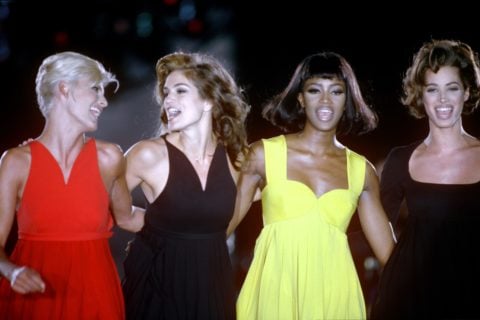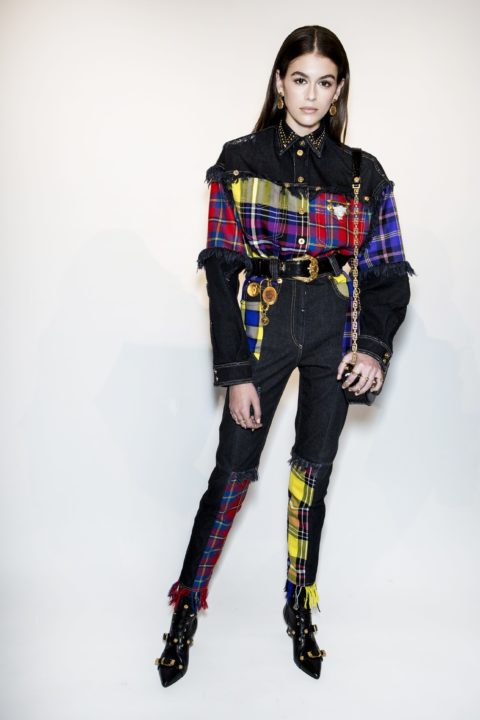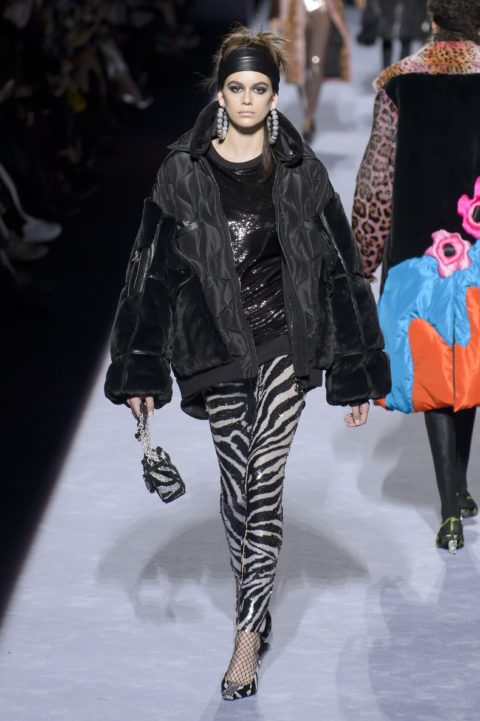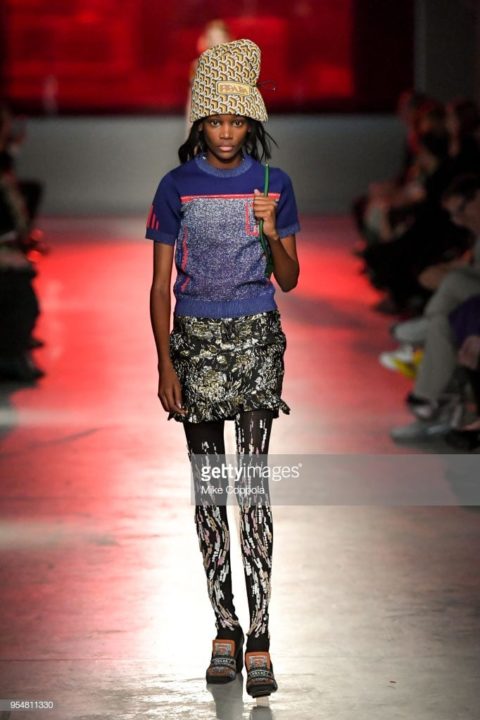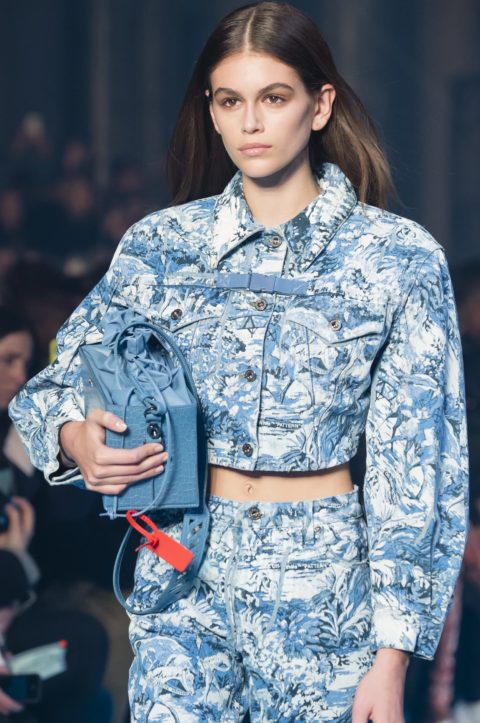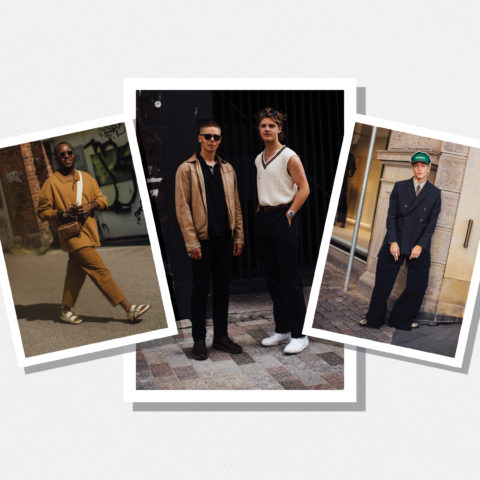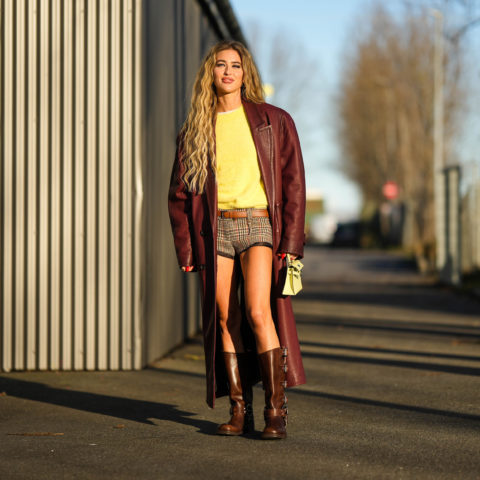In the Midst of a ’90s Revival, a Veteran Fashion Journalist Looks Back on the Era
Leanne Delap, FASHION's editor-in-chief from 1999-2003, explores why '90s nostalgia is more relevant than ever.
The perennially sooty Milanese air was alive with electricity on the spring night that Tom Ford exploded a sex bomb on the runway. It was the show—low-key in a black room at a men’s club (unlike the blowout spectacles to follow years later)—for his Fall 1995 collection, when he put Gucci back on the map. It wasn’t just the bedhead (a new idea at the time) or the smoky eye (also fresh) or the satin blouses worn open to the navel. It was the swagger: Amber, Shalom, Kate and then Helena in perilously low-cut jewel-tone velvet bell bottoms, horsebit pumps, nonchalant chubby furs and sassy mohair coats. Channelling the howling youth of Jagger and Morrison, Ford cranked the volume up to 11.
We like to poke fun at the ’90s, reducing the decade to Rachel hair and plaid shirts, but I cut my fashion teeth then (and that show still blows my socks off). I was a kid from Pickering, Ont., learning on my feet how to be the fashion reporter for a national newspaper. Runway news was brought back from the front lines then, with a six-month time lag, by just a handful of photographers and reporters. We still wore Levi’s and combat boots to fashion shows—because we were working and it was kind of a war. There were no celebs in the front row. Cellphones were not yet commonplace, so we filed copy from Europe by sticking suction cups to the receivers of land lines at hotels in a complicated prototype of dial-up.
Yes, things were slower, but that meant big ideas cut through, and in the thick of a ’90s revival, there’s something to be learned from going back briefly to what happened then. Just one season later, for Prada’s Spring 1996 show, Miuccia Prada—who began back in the ’80s as a strict adherent of minimalism—laid down her fresh, intellectually charged vision of jolie laide, or “ugly-pretty.” The stiff clothes with clashing patterns, like awkward schoolgirl uniforms wrought in sallow shades of mud and snot, were a revelation—and I loved them. In their perversity and confidence, they spoke to me (then in my mid-20s) much more than the slick Versace vixens or stern Sander and Lang clones. Earlier this year, Prada presented a Resort collection that recalled those defining ugly prints of the past and was styled with scholarly turtlenecks under wide-collar polo shirts that one might expect to find in a Wes Anderson film.
Very similar competing tensions are at play in fashion right now: edge and irony, soft and hard, slick versus authentic. The ’90s are indeed back with a vengeance. The first volleys came via social media, of course, captured off duty with the current crop of supermodels—specifically the Hadid sisters, who became the foremost proponents of this ’90s revival: Bella of spaghetti-strap tops and army boots with miniskirts, Gigi in her crop tops and embellished jean jackets. It is also worth noting that the breathtakingly young and fresh Kaia Gerber looks so much like her mom, Cindy Crawford, in the ’90s that the trappings of the decade seem preternaturally suited to her.
Like then, our current mood is a scattered, emotional hangover born of perpetual crises, and fashion is a reactive medium: The spectacle of Anita Hill’s brave testimony being ignored in the Senate Caucus room has been echoed by Christine Blasey Ford’s painful experience; No Means No has been updated with the #MeToo movement; Dubya has been superseded by Trump; and Y2K paranoia has been replaced by surveillance paranoia. Thus, it is no surprise that there is a riot of ’90s vibes out there, mashed up with wit and irony because, well, there is comfort to be found in revisiting familiar shapes and ideas. The ’90s was when thrifting really took hold as a cultural force, and that was the phenomenon that Prada was tapping into for that seminal ’96 show (except she was creating from scratch; she is a genius, after all). Meanwhile, on the higher end, designers were exploring minimalism and silhouette deconstruction carried over from the Japanese and Belgian avant-garde movements of the decade before it. Complicating matters, subcultural moments were emerging from the darkness of the club and into the daylight. The biggest were goth and grunge, both of which were co-opted on the runways by Olivier Theyskens and Marc Jacobs at Perry Ellis respectively. Streetwear, hip-hop, oversized and logo love competed loudly for our attention. These were the nascent signs of athleisure in the guise of matching track suits, which we see coming back so hard right now. It was a time to break rules and mix up sequins for day and to don jeans for evening or wear your slip out as a dress.
Those after-dark influences vibe today with Ben Taverniti’s Unravel Project’s gorgeous lace-up pants and silk hoodies that showcase the label’s Los Angeles origins, with hits of Paris via Milan along the way. It feels like the gang from Kids all grown up—and with money. The label takes the layering and edge of the ’90s and pumps it up with volume and luxe texture play and is perhaps a shining example of how streetwear can actually work for evening. Nineties decadence is key to the Saint Laurent aesthetic under Anthony Vaccarello; the Belgian designer deftly melded sparkly, super-short, big-shouldered evening dresses with LBDs made fresh with scalloped necklines. And he rammed home the message of legs-legs-legs with shorts suits in a palette of familiar yet meaningful black.
As for the designer who grabbed fashion by the throat back in the ’90s, Tom Ford is also refining his own territory as he revisits the decade of his rise. However, he’s not repeating his work from back then; he perhaps realizes he was too self-serious back in the day and has embraced irony as a vehicle that stands the test of time. For his re-energized eponymous label, Ford offered liquefied metallic leggings, black iridescent leggings and even more leggings—stamped with skin prints from zebra to snake. The old rules, Ford suggests, are boring. He offers modern sexy clothes with a playful element because he understands that wit is what is really in fashion right now.
Designers pluck moods from the ether. They stare down sensory overload and carve a sense of calm out of it. But it is really the cool kids who are still charting the course of fashion. The same nerdy fashion diehards digging through by-the-pound bins today inspired Prada all those years ago. They are fashion’s foot soldiers, gathering up the leopard print and the leggings, the bike shorts and the hoop earrings and plugging them back into the larger fashion engine. There is a machine hard at work that we don’t see. But the upshot is this: We can turn to either the ’90s role models of yesteryear for inspiration or, if not them, maybe their children.

